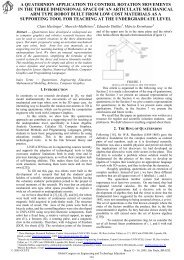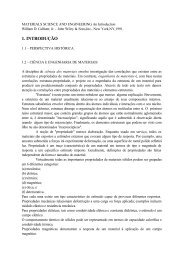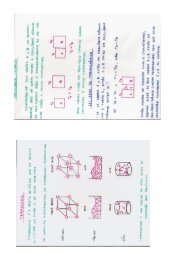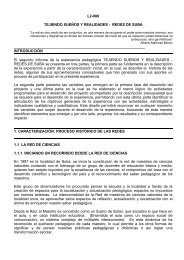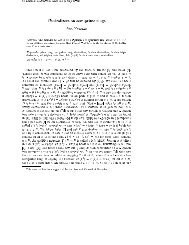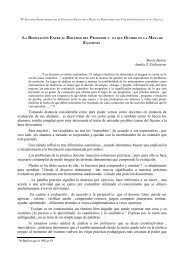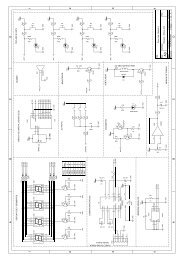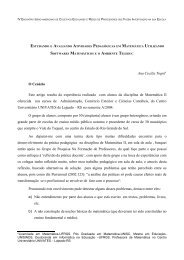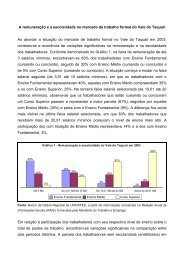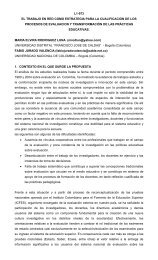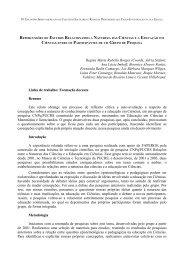Centralizers on prime and semiprime rings
Centralizers on prime and semiprime rings
Centralizers on prime and semiprime rings
You also want an ePaper? Increase the reach of your titles
YUMPU automatically turns print PDFs into web optimized ePapers that Google loves.
<str<strong>on</strong>g>Centralizers</str<strong>on</strong>g> <strong>on</strong> <strong>prime</strong> <strong>and</strong> semi<strong>prime</strong> <strong>rings</strong> 237<br />
2[S(x);T(x)]yS(x)+T (x)[S(x);y]S(x)+S(x)[y; T(x)]S(x) = 0 which can be written<br />
after some calculati<strong>on</strong> in the form<br />
(31) [S(x);T(x)]yS(x)+S(x)yT(x)S(x) , T (x)yS(x) 2 =0:<br />
The relati<strong>on</strong> (24) makes it possible to replace in (31) [S(x);T(x)]yS(x) by<br />
S(x)y[S(x);T(x)]. Thus we have 0 = S(x)y[S(x);T(x)] + S(x)yT(x)S(x) ,<br />
T (x)yS(x) 2 = S(x)yS(x)T (x) , T (x)yS(x) 2 . We have therefore<br />
(32) S(x)yS(x)T (x) =T (x)yS(x) 2 :<br />
Putting in the above relati<strong>on</strong> T (x)y for y we obtain<br />
(33) S(x)T (x)yS(x)T (x) =T (x) 2 yS(x) 2 :<br />
Left multiplicati<strong>on</strong> of (32) by T (x) leads to<br />
(34) T (x)S(x)yS(x)T (x) =T (x) 2 yS(x) 2 :<br />
Combining (33) with (34) we arrive at<br />
which gives together with (30)<br />
for all pairs x; y 2 R whence it follows<br />
[S(x);T(x)]yS(x)T (x) =0<br />
[S(x);T(x)]y[S(x);T(x)] = 0<br />
(35) [S(x);T(x)]=0:<br />
In case R is a <strong>prime</strong> ring the relati<strong>on</strong> (35) <strong>and</strong> Lemma 3 complete the proof of<br />
the theorem.<br />
<br />
Corollary 5. Let R be a 2-torsi<strong>on</strong> free semi<strong>prime</strong> ring <strong>and</strong> T : R ! R a left<br />
centralizer. Suppose that [T (x);x]x + x[T (x);x]=0holds for all x 2 R. In this<br />
case T is a centralizer.<br />
Proof: Since the assumpti<strong>on</strong>s of Theorem 4 are fullled we have<br />
[T (x);x]=0<br />
for all x 2 R. According to the above relati<strong>on</strong> we have T (x 2 )=T (x)x = xT (x).<br />
Thus we have T (x 2 )=xT (x) for all x 2 R. In other words, T is a Jordan right<br />
centralizer. By Propositi<strong>on</strong> 1.4 in [11] T is a right centralizer which completes the<br />
proof.<br />
<br />
Similarly, putting in Theorem 4 T (x) =x <strong>and</strong> applying again Propositi<strong>on</strong> 1.4<br />
from [11], we obtain the following result.



